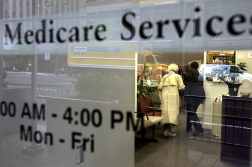State, local agencies learned strategic IT thinking during pandemic, says USDR

State and local governments are finally taking “the intersection of technology and policy” seriously, after two years’ worth of COVID-19-driven innovation, representatives of the U.S. Digital Response said on Wednesday.
Pari Sabety, the economic stability adviser at USDR, told StateScoop that the nonprofit group’s government partners better understand the importance of developing a long-term technology strategy than they did prior to the pandemic. The comments come before the one-year anniversary of the American Rescue Plan and the two-year anniversary of the U.S. Digital Response.
“[State and local governments] have figured out that they have to respond at scale, and they have to take seriously the intersection between policy and technology,” Sabety said. “Because without the technology to deliver the policy, the result will never be delivered to those in need that you expect to support. People have learned, governments have learned, ‘I can’t drive my tanker truck down a road built for Model T’s anymore. I have to build a new road.’”
Sabety, formerly a budget director for the State of Ohio, said states struggled at the onset of the pandemic to deploy “rapid response” solutions to technological challenges, like distributing emergency rental assistance. “Getting that stuff out the door” was a huge issue until organizations like USDR helped by speeding up software development and ensuring projects tracked with policy, she said.
“We’ve watched governments learn themselves and begin to approach the next decisions they’re making in a very different way,” Sabety said.
The shift in strategic thinking has also manifested in the way that state governments repair and rebuild their unemployment insurance systems, said Jessica Cole, USDR’s interim CEO. Cole said that when the pandemic was initially spreading across the U.S., the initial response from state governments was to “try to make them not melt down.”
“It was purely an immediate correction, was the initial instinct,” she said.
That was back then, Cole said. But now, the state and local agencies working with USDR aren’t just patching their technology problems — they’re making sure that those problems can’t come up again.
“It took time, but over time, you can see a movement now that actually says oh, we’re going to make some structural changes to how these systems work,” Cole said. “Because we know we can’t predict what’s coming next, we’re actually ready to build flexible, user-centered tools where we will be able to detect needs as they change.”






